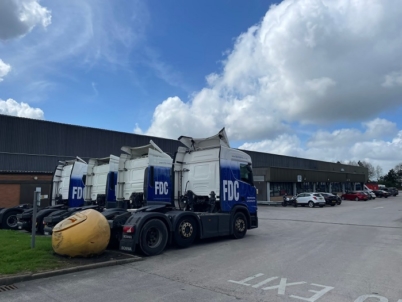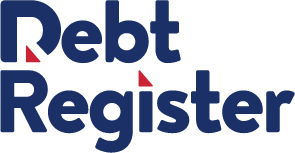-
ROSSLARE EUROPORT TARGETS HEALTH & SAFETY WITH CAMERA TELEMATICS PARTNERSHIP - 2 days ago
-
Landmark Study Reveals Wearable Robotics Significantly Boost Safety and Efficiency in Industrial Environments - July 24, 2024
-
Visku Tackle The Retail Seasonality Challenge One Pallet At A Time - July 22, 2024
-
KAMMAC AND BERGEN LOGISTICS STRENGTHEN FASHION & LIFESTYLE SERVICES IN THE UK - July 19, 2024
-
TENTBOX EXTENDS PARTNERSHIP WITH ARROWXL TO SUPPORT INCREASING DEMAND - July 17, 2024
-
The Perfume Shop improves customer journeys while driving profitability in partnership with Scurri - July 17, 2024
-
ZEROMISSION SECURES £2.3M ($3M) INVESTMENT TO ACCELERATE ELECTRIC FLEETS - July 16, 2024
-
BCMPA CELEBRATES SUCCESS OF 2024 CONFERENCE - July 15, 2024
-
Best of the Best: Jungheinrich Celebrates Triple International Award Win - July 12, 2024
-
GOPLASTICPALLETS.COM CALLS ON NEW CHANCELLOR RACHEL REEVES TO CONSIDER PLASTIC PACKAGING TAX REFORM - July 10, 2024
Morphean’s Andy Martin, Segment Lead – Retail, looks at the importance of understanding occupancy and using the data to support business and security decision making in times of crisis, and beyond.
The COVID-19 pandemic has added to the challenges already being faced by many retailers. As numerous shops remain closed for the foreseeable future, it is the providers of essential items, such as grocers and convenience stores, that have worked hard to remain open against the odds. Most notable has been the requirement for staff, management and security teams to enforce social distancing regulations for customers, staggering those entering and exiting the store, and applying appropriate signage to direct customers once inside. While not fool proof, retailers have done what they could with the resources available to them.
The ability to successfully monitor customer movement and behaviour once inside will have presented a real challenge. Unfairly, but predictably, some retailers have come in for criticism. While their efforts have been heroic, the guidance they have received has not always been timely or complete, and has resulted in some ‘trial and error’. With pressure to ensure the health and safety of customers, and provide evidence of operation in accordance with the necessary guidelines, many retailers are already considering the options necessary to help them in the wake of a predicted second wave. The pandemic has taught the retail industry that it’s better to be prepared for every eventuality in an increasingly uncertain world, and those with the foresight are eager to source appropriate solutions.
Intelligent occupancy
Utilising cloud technologies, specific tools have been developed to aid store managers and security teams, not just for immediate crisis management, but as they plan for the longer term too. Being able to determine, control and measure occupancy levels can prove invaluable in the transition from lockdown towards a ‘new normal’, and beyond. Understanding and being able to respond to occupancy data is an important part of not only improving onsite security and situational awareness, but also integral to delivering great service, resourcing tasks appropriately and creating a secure and positive shopping environment.
Through the use of sensors placed at entrances and exit points, a dedicated system can count the number of customers coming and going, calculating how many people are inside the shop at any one time. Downward placement ensures GDPR compliance by performing a head count rather than identifying individuals. When combined with information from the instore surveillance system, managers and security teams can monitor customer movement around the store, to remind customers of the importance of maintaining a safe distance or issuing warnings to alert of breaches of the social distancing regulations.
Health
and safety over the longer term
With a
greater need to be able to guarantee staff and customer safety it’s also
necessary to take a long range view of business decision making, in which data
around store occupancy can play an important role. Occupancy data can be relied
upon to prove that a store has taken appropriate measures with video
surveillance footage, combined with accurate customer counting, providing
documented evidence of full compliance. Customer limits can be set according to
the size of the store, or other factors, ensuring that the system can be made
bespoke and tailored specifically for each store’s requirements.
Occupancy data can also be combined in the cloud with the data from other devices employed in store, to produce powerful insights that can be used to produce business intelligence. The data from the same system that monitors customers entering a store, for example, can be combined with data from video surveillance cameras and the access control system to gather information about customer behaviour and buying preferences to improve the customer experience. Another use could be the monitoring of operations for greater efficiency, for example, alerting staff when more checkouts need to be opened, or to better deploy staff around the store to meet business demand.
Remote monitoring in the new normal
In an environment where the return to a more normal way of interacting is part of a slow and controlled operation, measures should be taken to ensure that only those personnel necessary for operations are on site. Remote monitoring and operational insights can be managed virtually by security and operations personnel, via tablet or mobile, without the need to unnecessarily enter the premises. This can revolutionise an environment which traditionally relies on management being very hands on, by utilising the technology to enable key decisions to take place from a safe distance.
Monitoring occupancy generates insights that can lead to improvements in operations, security and safety. It can enable the retailers to enforce and prove compliance in the case of social distancing, together with optimising store performance more generally. While of great benefit in these changing times, intelligent occupancy should not be viewed purely as a tool for a crisis, but as a mechanism for encouraging the right behaviours at the right time. Greater visibility results in the ability to coordinate operations across stores and, ultimately, to serve the customer better, which is always the priority.
Find out more about the benefits that occupancy tools can provide for your business:
ANDY MARTIN – SEGMENT LEAD, RETAIL – Morphean SA
With over 30 years’ retail experience, Andy has held senior retail management roles across operations, supply chain and loss prevention with Morrisons, Dixons Stores Group and HMV. In 2014 Andy joined the world market leading network video company Axis Communications and led their retail business development function across Northern Europe, before joining Morphean in 2018, focusing on delivering hosted solutions, as a service, across the retail, banking, hospitality and leisure sectors. Andy is a regular keynote speaker and industry thought leader providing insights on a variety of related forums and events.
About Morphean SA
Morphean is a Swiss technology company with a strong presence in more than 12 countries worldwide. Founded in 2009 and with over 60 partners across Europe, the secure Morphean platform informs decision making and drives efficiencies for all organisations by generating unique and actionable insights from a multitude of data sources. With expertise across retail, transport & facilities management, among others, the company is recognised as a leader in secure service platform delivery through the use of cloud and AI technologies. The platform helps firms prepare for the future by keeping their ‘Eyes Wide Open’ to the intelligence gathered from a variety of network connected devices. www.morphean.com

































